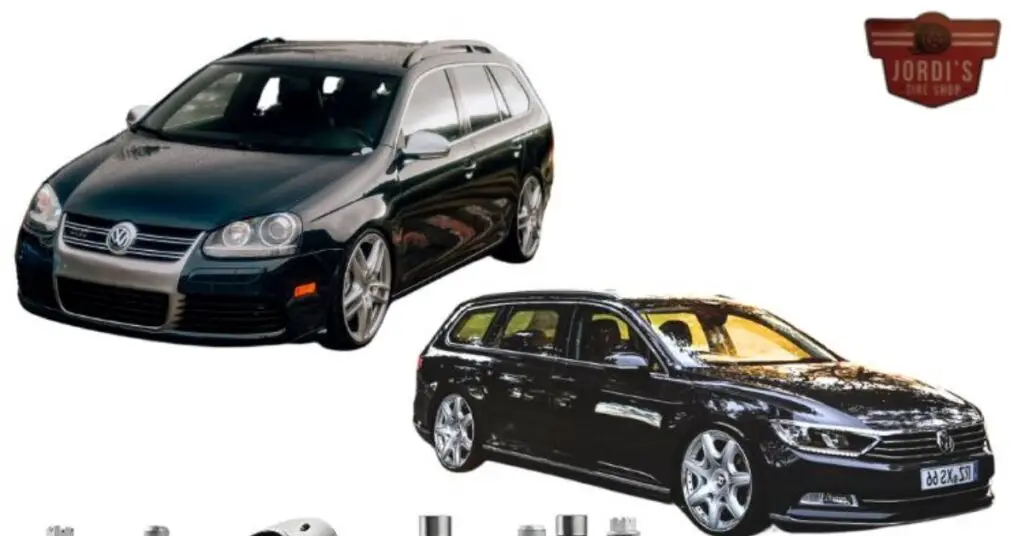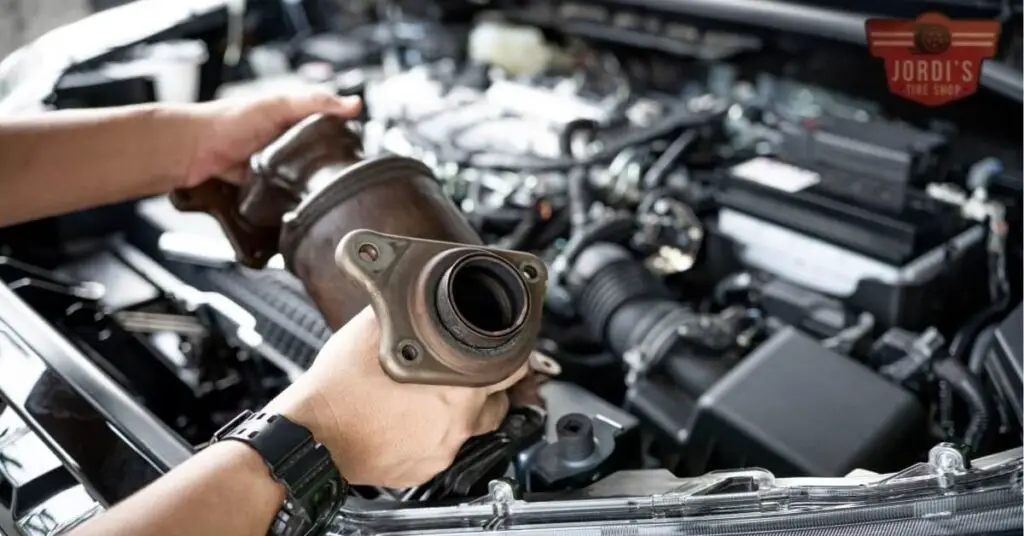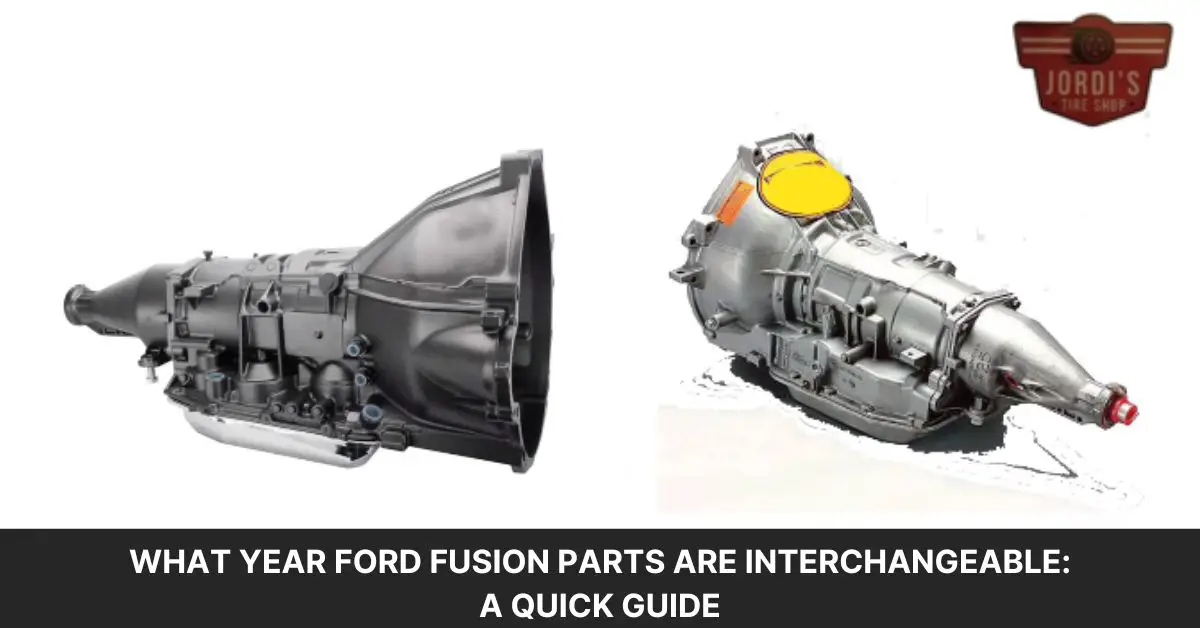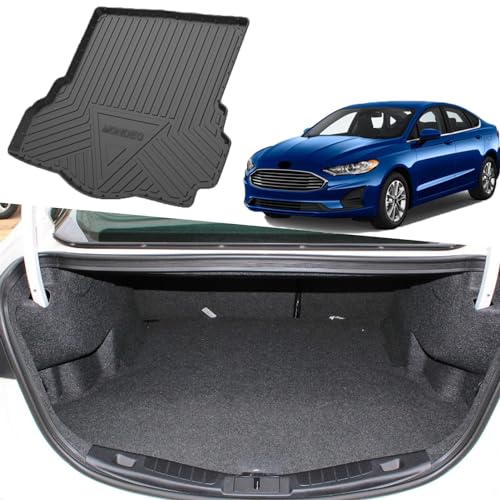When we’re on the hunt for car parts, especially for models like the Ford Fusion, we often wonder about the interchangeability of parts from different years. It’s a common question that can save us time, money, and a whole lot of frustration. After all, finding the right part for your car shouldn’t feel like looking for a needle in a haystack.
We’ve all been there, scrolling through forums, asking mechanics, or standing in an auto parts store trying to figure out if a component from a 2010 model will fit a 2012. It’s not just about saving a few bucks; it’s about understanding our cars better and making informed decisions. So, let’s dive into the world of Ford Fusion parts, explore which years share interchangeable components, and make our car maintenance journey a bit smoother.
Understanding Vehicle Interchangeability

In navigating the realm of car maintenance and upgrades for models like the Ford Fusion, understanding vehicle interchangeability is crucial. This knowledge not only streamlines the search for compatible parts but also ensures that we invest in the right components, promising both fit and function. Let’s delve into what makes certain Ford Fusion parts interchangeable across different years.
Interchangeability hinges on the car’s platform and generation. Generally, the Ford Fusion spans across two main generations: the first from 2006 to 2012 and the second from 2013 to 2020. Within these generations, parts such as body panels, engine components, and interior elements often share compatibility due to consistent design specifications and dimensions.
Critical to consider are the model’s facelifts or minor updates within a generation. These changes can affect interchangeability, particularly with external components like headlights and bumper covers. For instance, parts from a 2011 Fusion might not fit a 2013 model because of the second generation’s introduction and subsequent design updates.
Engine and drivetrain components exhibit a higher degree of interchangeability, especially if the engine sizes and types remain constant across years. However, advancements in technology or tweaks in performance can introduce variances, so it’s imperative to verify the compatibility of parts like transmissions and suspensions with respect to the specific year and model variant.
Lastly, it’s worth noting that aftermarket parts designed for a wide range of years can offer more flexibility and compatibility, providing they meet the vehicle’s specifications. Seeking advice from forums, utilizing online interchange databases, or consulting with professionals can further aid in identifying which Ford Fusion parts are interchangeable, making the process more efficient and cost-effective.
The Ford Fusion: A Brief Overview

Building on our exploration of part interchangeability and its crucial role in maintaining and upgrading vehicles like the Ford Fusion, it’s essential to understand this model’s background. The Ford Fusion, introduced by the Ford Motor Company in 2006, quickly became a popular choice among mid-size sedan buyers. It stands out for its stylish design, comfortable interior, and impressive performance attributes. Over its production years, the Ford Fusion has seen multiple updates, significantly affecting parts interchangeability.
Ford designed the Fusion across several generations, each bringing technological advancements and design updates. The first generation, spanning from 2006 to 2012, laid the foundation with two distinct facelifts that subtly changed its exterior and interior design. However, many engine components and some interior parts remained largely compatible across these years.
Transitioning into the second generation from 2013 to 2020, Ford introduced a more global design language, aligning the Fusion more closely with its worldwide lineup. This generation saw the introduction of new engine options, including EcoBoost models, hybrid, and plug-in hybrid variants, significantly diversifying the lineup. As these updates introduced new technologies, they impacted parts interchangeability, especially concerning engine and drivetrain components.
Understanding these generational divides and the specific updates each one brings helps us identify which Ford Fusion parts are interchangeable. For instance, external body parts from a first-generation Fusion might not fit those from the second generation due to design overhauls. Similarly, engine and drivetrain components may have compatibility across certain years but not others, owing to the introduction of new technologies and engines.
In navigating the world of Ford Fusion upgrades or maintenance, recognizing these generational nuances proves invaluable. It ensures we make informed decisions about which parts can be swapped, enhancing not only the vehicle’s performance but also its longevity and efficiency.
Interchangeable Parts for the Ford Fusion
Diving into the specifics, we find that identifying interchangeable parts for the Ford Fusion requires a keen understanding of its generational timelines. The first generation, spanning from 2006 to 2012, and the second generation, from 2013 to 2020, offer distinct opportunities for part swaps, especially considering minor facelifts within these periods.
Body panels, for instance, often see compatibility within the same generation but not between the two, due to the comprehensive design overhaul in 2013. Specifically, front and rear bumpers, fenders, and hood assemblies from a 2011 model won’t fit a 2014 model, given the shift in the vehicle’s aesthetic and structural design. However, within the 2006 to 2012 bracket, owners might find more flexibility in interchangeability.
Interior components present a slightly different story. Seats, trim pieces, and some dashboard elements remain consistent within each generation, barring facelift years that introduced new features or designs. For example, a steering wheel from a 2009 Fusion may very well fit a 2012 model but won’t be compatible with a 2013 due to changes in the dashboard’s design and the integration of new technology.
Under the hood, engine and transmission parts are where things get interesting. The Ford Fusion’s powertrain components from 2006 to 2009 are largely interchangeable before the introduction of new engine variants in 2010. These later engines and their associated parts carry over well into the second generation, with some exceptions primarily due to the introduction of hybrid and plug-in hybrid models.
Lastly, suspension and braking systems offer a good degree of compatibility across the same generation. The fundamental architecture remained consistent until the 2013 redesign, which not only enhanced the vehicle’s size but also its handling characteristics, thus necessitating different suspension components.
In essence, the key to successfully swapping parts between Ford Fusion models lies in pinpointing the production years and understanding the divide between the two generations. Armed with this knowledge, navigating the interchangeability landscape becomes a much more straightforward endeavor, ensuring enhancements and repairs are both efficient and cost-effective.
Factors Affecting Parts Interchangeability

In considering the interchangeability of parts for the Ford Fusion, we encounter several factors that play a pivotal role. Understanding these can make the search for compatible parts more straightforward and effective.
Car’s Platform and Generation
The foundation for parts interchangeability rests on the car’s platform and the generation it belongs to. For example, the Ford Fusion spans mainly two generations: the first generation from 2006 to 2012 and the second from 2013 to 2020. Parts are more likely to be interchangeable within the same generation due to similarities in design and construction.
Technological Advancements
With each generation, Ford introduced various technological advancements that impact parts compatibility. For instance, updates in safety features, engine performance, and fuel efficiency often mean that components from a newer model may not fit or function correctly in an older model. These advancements, while improving the vehicle’s performance and safety, can limit the interchangeability of certain parts across different years.
Design Changes
Subtle or significant design changes between models also affect parts interchangeability. This includes alterations in the vehicle’s exterior, such as body panels and lights, and interior components like dashboards and seating. Even small changes can mean that parts don’t fit as intended, highlighting the importance of paying close attention to model years and design specifications when searching for interchangeable parts.
Engine and Drivetrain Variations
Different engine and drivetrain configurations can greatly impact which parts are interchangeable between Ford Fusion models. Engines, for example, may vary in size, type (such as gasoline or hybrid), and power output from one year to another. Drivetrain parts may also differ based on whether the vehicle is front-wheel drive or all-wheel drive. Knowing the specific engine and drivetrain details is crucial for finding compatible replacement parts.
Keeping these factors in mind, we can better navigate the complex landscape of auto parts interchangeability for the Ford Fusion. Doing so ensures that we select parts that are not only compatible but also contribute to the vehicle’s optimal performance and longevity.
How to Identify Interchangeable Parts

Identifying interchangeable parts for the Ford Fusion, or any vehicle, involves several steps that ensure compatibility and save resources. We explore a few essential methods to help in this process, making it easier for anyone to find the right parts for their Ford Fusion.
Utilize VIN and Online Databases
First, checking the Vehicle Identification Number (VIN) is crucial. The VIN contains information about the car’s model, year, manufacturing location, and other specifics. This number acts as a fingerprint for the vehicle, allowing us to access detailed information about what parts are interchangeable through online databases and tools specifically designed for auto parts compatibility.
Consult Repair Manuals
Second, turning to the Ford Fusion repair manuals offers comprehensive information on parts specifications and interchangeability. These manuals typically list part numbers, which can be cross-referenced with other models and years to determine if they match. Repair manuals prove invaluable for understanding the intricacies of the Ford Fusion’s design and the potential for parts interchangeability across different years.
Join Forums and Communities
Joining Ford Fusion forums and online communities is another effective strategy. Here, one can find firsthand experiences and advice from other Fusion owners and enthusiasts. These communities often have threads or discussions dedicated to parts interchangeability, providing insights not available in manuals or databases.
Talk to Dealerships and Auto Shops
Lastly, consulting with dealership parts departments or trusted auto shops can offer professional advice on part compatibility. These sources have access to the latest manufacturer information and databases that detail which parts from various years of the Ford Fusion are interchangeable.
By leveraging these methods, we can accurately identify which parts from different years of the Ford Fusion are interchangeable, ensuring a successful and efficient maintenance or repair project.
Tips for Sourcing Interchangeable Parts
Transitioning seamlessly from understanding the criticality of identifying interchangeable parts for Ford Fusion models, we’re now shifting our focus towards effective strategies to source these components. Our collective experience and research have led us to curate these practical tips aimed at simplifying your search for compatible Ford Fusion parts.
First, embracing digital resources significantly enhances our capability to locate the appropriate parts. Websites dedicated to auto parts offer extensive databases, allowing us to cross-reference Ford Fusion parts by year and model. Inputting the VIN can further refine searches, ensuring the parts displayed are compatible with our vehicle’s specific iteration.
Second, engaging with online forums and social media groups centered around Ford vehicles, particularly the Fusion model, proves invaluable. These platforms are bustling with enthusiasts and experts alike, offering insights, personal experiences, and sometimes even specific parts for sale or trade. The collective knowledge found here often surpasses what we might uncover on our own.
Third, visiting local salvage yards presents an opportunity, especially for those of us looking for parts from older Fusion models. While this requires more effort, physically inspecting the parts ensures their condition and suitability first-hand. Plus, salvage yards frequently house vehicles from a range of years, increasing the odds of finding a match.
Fourth, leveraging relationships with reputable auto parts stores and mechanics introduces an element of trust into the process. These professionals can offer guidance based on their extensive experience and may even have access to internal databases for part compatibility not available to the general public.
Lastly, investing in a quality parts catalog specific to Ford Fusion models, if available, offers a comprehensive overview of interchangeable components across different years. This reference material can serve as a reliable guide in our quest for the right parts.
Combining these strategies, we aim to demystify the process of sourcing interchangeable parts for Ford Fusion models, making maintenance and upgrades more accessible to everyone.
Conclusion
We’ve journeyed through the maze of finding interchangeable parts for the Ford Fusion and discovered it’s not as daunting as it first appears. Armed with the right knowledge and tools—from VIN checks to engaging with the vibrant online community—we’re better equipped to tackle maintenance and upgrades. By embracing the strategies we’ve shared, sourcing compatible parts becomes a smoother, more efficient process. Let’s keep our Fusions running strong and looking sharp by applying what we’ve learned together. Here’s to many more miles of seamless driving and smart, cost-effective car care!
Related Posts:
- Exhaust Fluid System Fault: Causes, Symptoms, and Solutions
- Ford F150 Transmission Identification Codes: A Comprehensive Guide
- Ford Outside Temperature Sensor Reset: A Quick Guide
- Full Accessory Power Active Meaning: Understanding Your Vehicle’s Electrical System
- How to Bypass Ford Speed Limiter: Tips and Tricks
- What Year Ford Fusion Parts are Interchangeable: A Quick Guide








